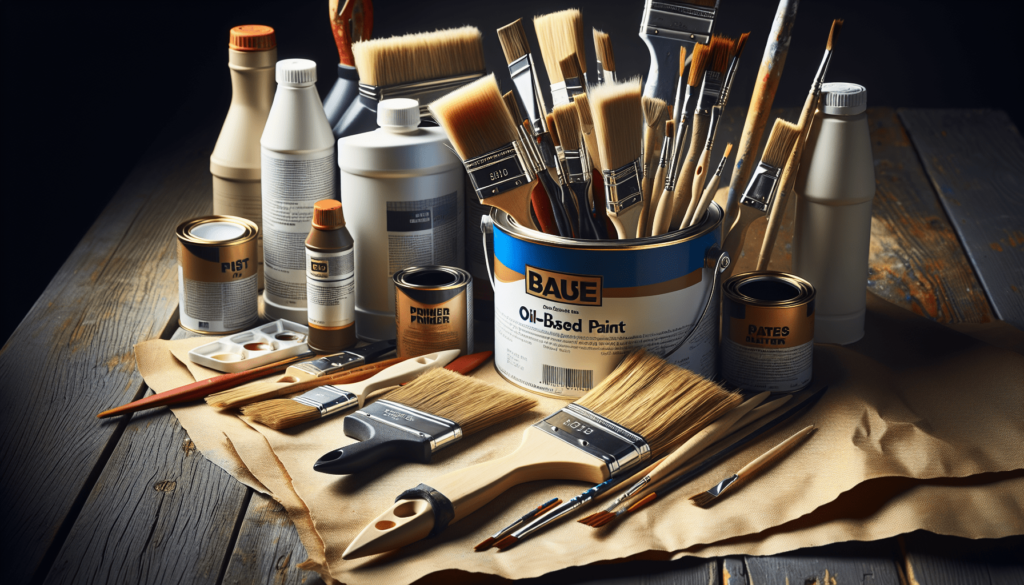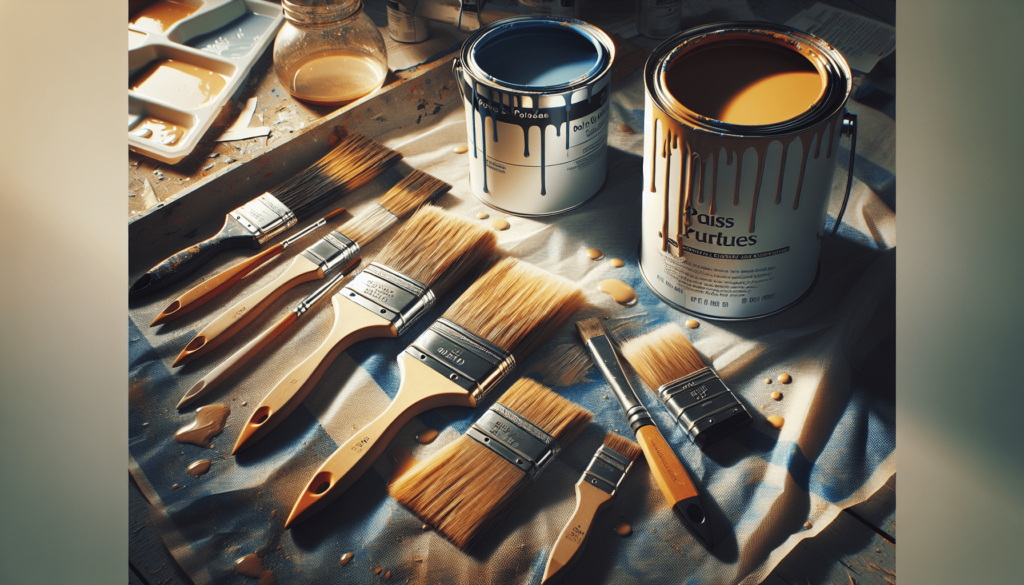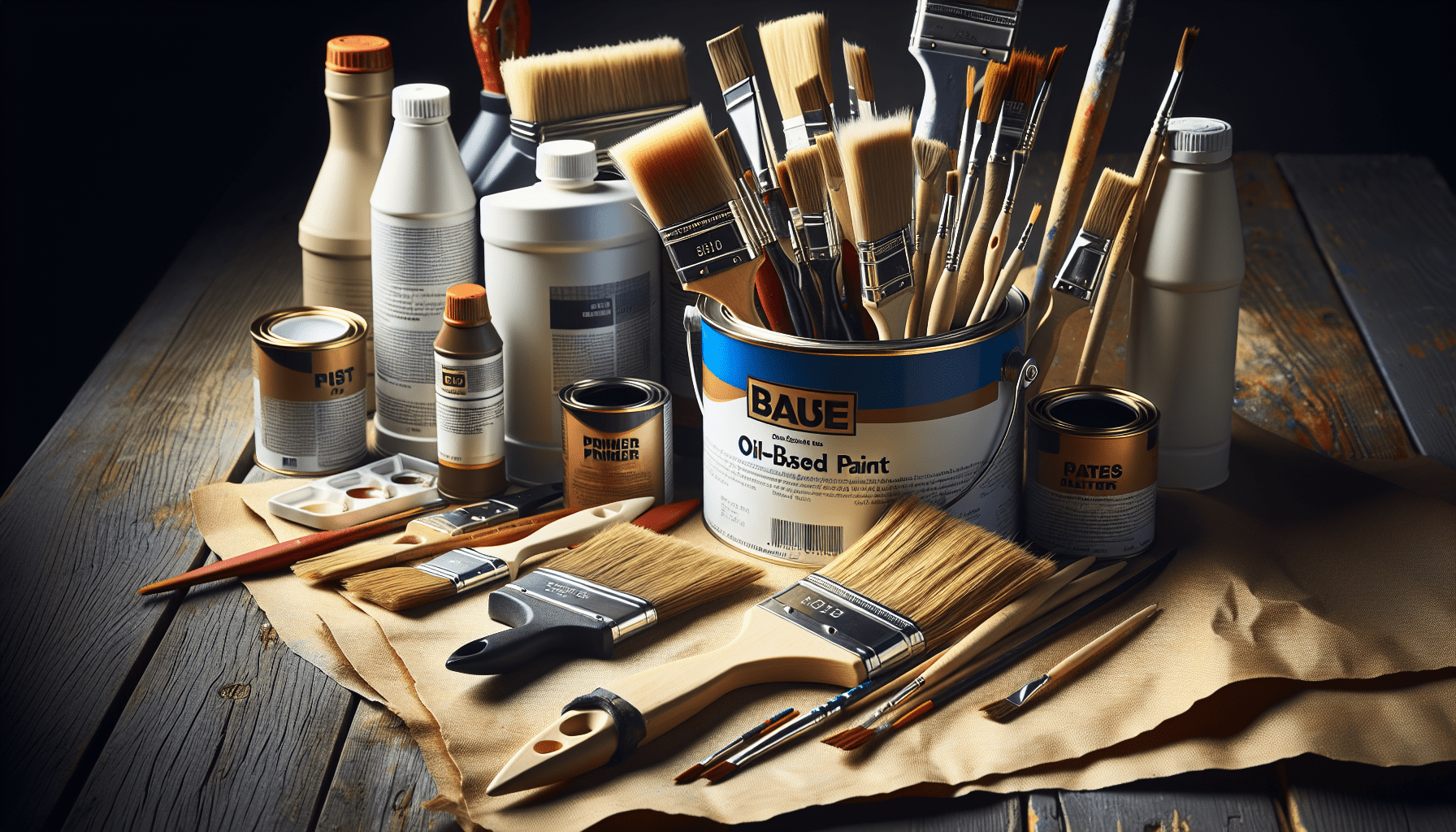In the ever-evolving field of painting and home improvement, one question consistently arises: can you put oil-based paint over water-based primer? This article addresses that query head-on, elucidating upon the complex chemical interactions that take place between differing painting materials and their effects on the finished appearance. Armed with the insights provided, you’ll be able to approach your next painting project with newfound confidence and expertise.

Introduction
The world of painting, whether it’s for art, home improvement, or professional construction, is filled with choices that could profoundly impact your project’s outcome. One such decision you might encounter is whether to put oil-based paint over a water-based primer. This question might seem tricky initially. However, to determine the best approach for your project, it’s crucial to understand what oil and water-based paints entail, the role of primers, and the compatibility between these different types of coatings. This article aims to provide an in-depth exploration of these topics to guide your painting projects successfully.
Understanding Oil and Water Based Paints
Before delving into the main discussion, it’s imperative to get a clear understanding of what oil and water-based paints are and their characteristic differences.
Characteristics of oil-based paint
Oil-based paints, otherwise known as solvent-based paints, are characterized by their durability and rich, glossy finish. They are slow-drying, allowing for a longer open time for adjustments during painting, making them advantageous for elaborate or detail-heavy projects. Additionally, oil-based paints have superior stain resistance, excellent adhesion, and are less sensitive to environmental conditions during application.
Characteristics of water-based paint
On the other hand, water-based paints, also often referred to as latex or acrylic paints, are celebrated for their quick drying times, low volatile organic compound (VOC) content, and easy soap-and-water cleanup. Distinguished by their mild odor compared to oil-based paints, these paints are safe for interior and exterior use. They offer good adhesion and durability, though typically less so than oil-based paints.
Understanding Primers
Taking a step back from the topcoat paints, let’s explore the undercoat, better known as the primer.
Purpose of primers
Primers function as a preparatory coating for your projects. They are engineered to adhere to the surface and create a stable and uniform base for the paint to stick. The use of primers also aids in preventing stains from seeping through the paint and improving the paint’s adherence to the surface, reducing the chances of peeling or flaking.
Types of primers
Primers come in different types, including oil-based and water-based versions. Similar to their paint counterparts, oil-based primers are more durable and stain-resistant, making them suitable for high-traffic or stain-prone areas. Meanwhile, water-based primers dry quickly and have less odor, making them ideal for most indoor and outdoor applications.)
Compatibility of Oil-Based Paint on Water-Based Primer
Navigating back to our main question – can you put oil-based paint over a water-based primer? The short answer is yes, but few factors need consideration.
Factors to consider
The surface’s cleanliness and the type and quality of the primer affect the oil-based paint’s adherence to the water-based primer. Careful attention must be paid to the thoroughness of the surface preparation, as poorly prepared surfaces might impact the overall finish.
Advantages of using oil-based paint on water-based primer
Using oil-based paint on water-based primer can offer the best of both worlds when done correctly. You get the quick-drying, low-VOC benefits of the water-based primer and the durability, richness, and superior stain resistance of the oil-based paint.
Disadvantages of using oil-based paint on water-based primer
However, there can be potential issues, such as poor adhesion and increased susceptibility to chipping or peeling, if the surface preparation or application isn’t done correctly.

Preparation and Application
Successfully applying oil-based paint over water-based primer heavily depends on careful surface preparation, primer application, and paint application.
Surface preparation
Properly cleaning and preparing the surface is a crucial step. Remove all traces of dirt, oils, or old, flaking paint from the surface before applying the primer. Sanding the surface to create a slightly rough texture can enhance primer adhesion.
Primer application
Apply the water-based primer following the manufacturer’s instructions, and ensure it fully dries before applying the oil-based paint. It’s usually beneficial to apply two coats of primer for proper coverage and optimal paint adhesion.
Paint application
When it’s time to apply the oil-based paint, do so in thin, even coats, allowing ample drying time as specified by the manufacturer between applications. Always remember to stir the paint thoroughly before application.
Potential Issues and Solutions
As aforementioned, poor adhesion, peeling, chipping, and blistering can be potential issues when applying oil-based paint over water-based primer.
Peeling or chipping
This is usually a result of poor surface preparation or application technique.
Poor adhesion
This issue can occur if the primer is not fully dry before applying the paint or if the paint is applied too thickly.
Blistering
Blistering or bubbling might arise due to applying the paint in extremely hot or humid conditions.
Other potential issues
Other issues can include staining, watermarks, or a lack of uniform gloss, many of which can be rectified or prevented by using a quality primer and correct application.
Solutions to the issues
Ensuring proper surface preparation, correct application, and using high-quality materials and tools should help avoid most issues.
When to Use Oil-Based Paint on Water-Based Primer
The use of oil-based paint over water-based primer can be ideal for surfaces that require durability and resistance to wear and tear, such as doors, trims, or furniture. This combination may also work well for detail-oriented projects that require a longer open time provided by oil-based paints specifically.
When to Avoid Using Oil-Based Paint on Water-Based Primer
This combination may not be suitable for surfaces exposed to excessive moisture or for individuals with limited ventilation or potential sensitivity to the stronger odor of oil-based paints. Also, it’s worth considering the environmental impact as oil-based paints usually contain higher levels of VOCs.
Alternatives to Consider
If the combination of oil-based paint over water-based primer doesn’t seem to fit your bill, consider using oil-based primer for exceptional durability or switching to water-based paint for a more eco-friendly and less odorous option if the superior durability of oil-based paint isn’t a necessity.
Conclusion
In conclusion, while you can put oil-based paint over water-based primer, careful consideration is imperative to ensure the successful execution of your project. Remember, the end-result hinges hugely on your understanding of these materials and their proper application. Whatever path you decide to embark on in your painting journey, remember to prioritize quality, from the materials to the application, to achieve a paint job that isn’t just visually pleasing, but durable and lasting too.



